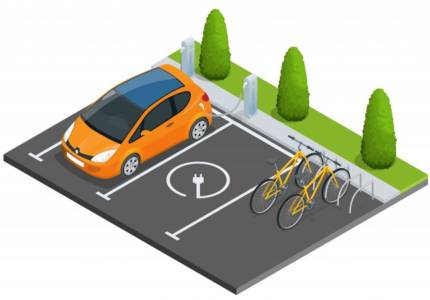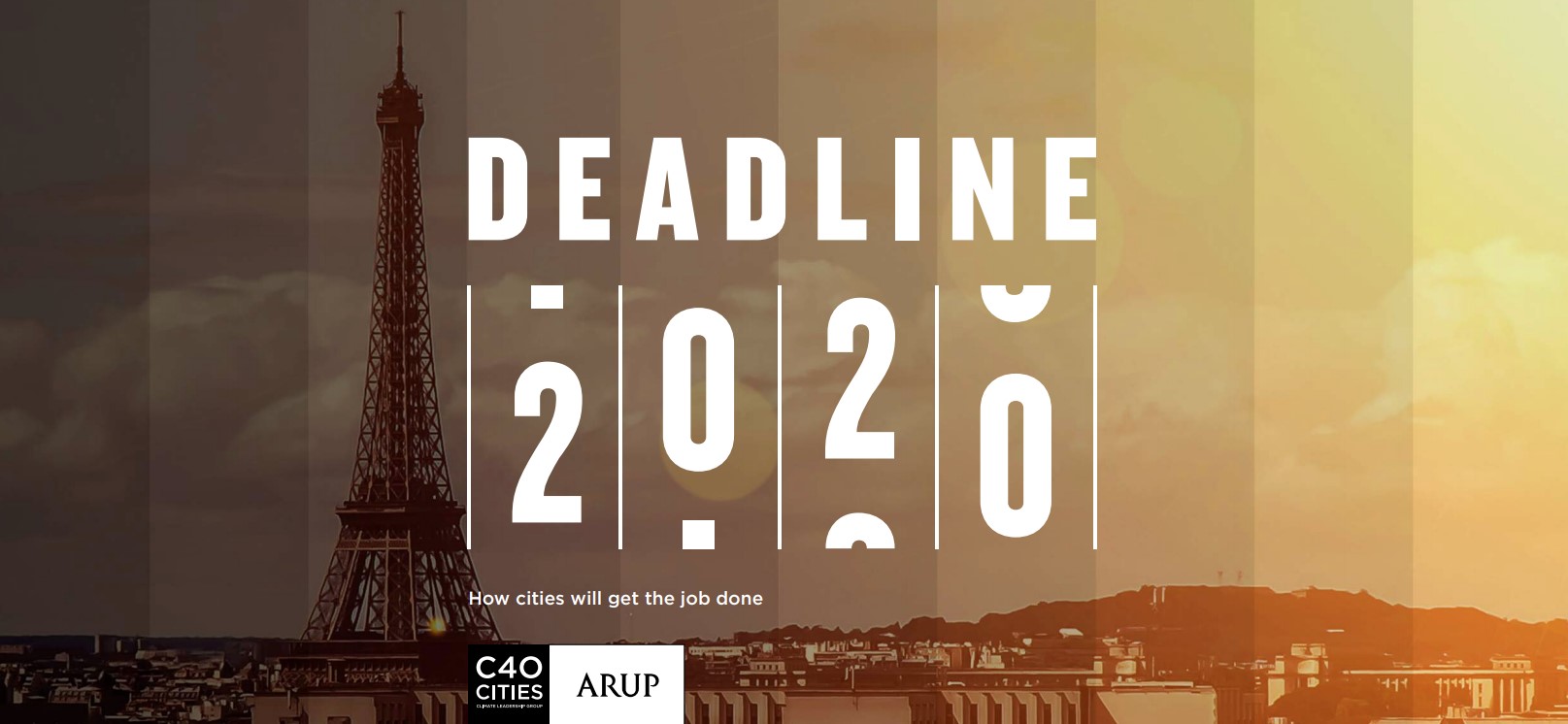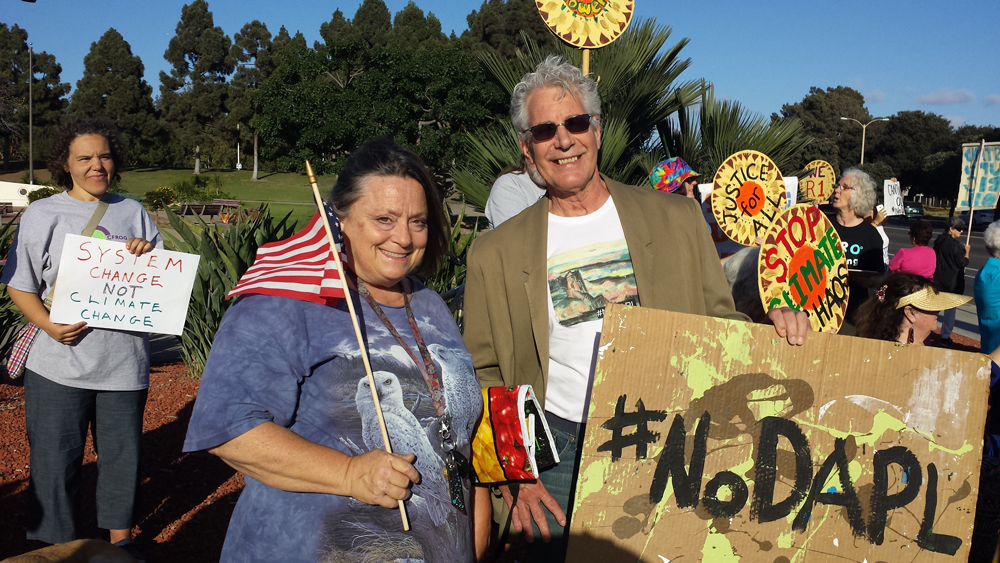RECOMMENDATIONS FOR PRIORITY CLIMATE EMERGENCY ACTIONS
FROM OJAI’S CLIMATE EMERGENCY MOBILIZATION COMMITTEE
SCOPE: To identify, evaluate, and recommend specific ways for the City to rapidly and significantly draw down emissions with a focus on climate mitigation, and to serve as an example for other jurisdictions. Recognizing the emergency nature of the climate crisis, these recommendations focus specifically on high-impact climate mitigation actions (i.e. ways to stop making the crisis of global warming worse).
FOCUS ON SOLUTIONS IN THESE AREAS:
• Energy: Investigate options to support energy efficiency, renewable energy, and electrification.
• Vehicles and other Internal Combustion Engines: Investigate options to support low/no emission alternatives to internal combustion vehicles.
• Carbon sequestration: Investigate options for removal of carbon dioxide from the atmosphere.
• City Operations: Investigate options to incorporate climate emergency mitigation measures throughout City operations.
THE PATH FORWARD: We need to reimagine how we use and produce energy. Large-scale investment is needed to upgrade our energy infrastructure and promote conversion to a post-fossil fuel economy. If done wisely, this is an investment in a more sustainable, equitable and resilient world. It is a mechanism to revitalize the economy following what is a significant recession caused by the ongoing pandemic.
We are, at the same time, witnessing an environmental breakdown because of the climate crisis due to the unsustainable production and use of fossil fuels. Can it be done differently, and can we transition away from fossil fuels? The answer is yes. A combination of measures are needed including becoming more efficient with the energy we use, promoting existing and developing new renewable sources of energy, finding ways to capture carbon to reduce the present climate stressors, and embracing research and development of new technological solutions.
done differently, and can we transition away from fossil fuels? The answer is yes. A combination of measures are needed including becoming more efficient with the energy we use, promoting existing and developing new renewable sources of energy, finding ways to capture carbon to reduce the present climate stressors, and embracing research and development of new technological solutions.
It is through local action that we effect change in the larger world. We should embrace the concept that all politics are local and that no matter how small our level of organization, we can make a difference in the larger society. With leadership from our City Council and a unified community supporting a healthy environment, We can have an outsized influence on policies in our county and state.
The changes needed cannot be accomplished in an incremental or gradual manner. Certainly, actions made at the individual level are important – reducing household carbon footprints, consumption choices, energy conservation and electrification of appliances. The necessary and larger effort must be to affect institutional decisions and public policies around programs, policies, incentives and legislation.
While we are currently experiencing consequences of the climate crisis with extreme weather events, droughts, sea-level rise, wildfires and other changes — we need to take action now for the world our children and grandchildren will inherit – that is our collective ethical and moral obligation. For the road to recovery, Governor Newsom has established a blue-ribbon Task Force to identify opportunities for emerging from the economic consequences of the pandemic. The Governor’s Task Force on Business Jobs and Recovery is headed by his Chief of Staff Ann O’Leary and climate advocate Tom Steyer. The cities should play a role by implementing recovery measures and taking advantage of funding opportunities that will result.
FINDINGS AND RECOMMENDATIONS:
The Committee is developing a set of recommendations regarding climate mitigation policies, programs and resolutions to present to Council. We recommend that the City assert its leadership by making a commitment to be carbon neutral by no later than 2030, and for municipal operations to achieve that target by 2025. Following is a list of ambitious yet necessary actions to meet the goals of carbon neutrality and do our part as residents to address the climate crisis.
Vehicles and Internal Combustion (IC) Engines: Reduce GHG emissions from fossil-fuel-fired vehicles and engines.
Transportation-related emissions are a major piece, if not the largest piece, of GHG emissions in Ojai — so we must implement measures to decrease vehicle miles traveled while the community transitions to electric vehicles.
1. Envision an all-electric vehicle community.
a. Declaration of a commitment to be internal combustion engine (ICE) free by 2030.
b. Seek grants, rebates and other incentives to finance vehicle and IC engine electrification efforts.
c. Install additional EV charging stations with grant or other funding in anticipation of increases in our EV inventory.
d. Consider incentives for EV conversion such as preferred parking, advocate for lower license fees and tax incentives and rebates from regional, state and federal sources.
e. Promote small electric vehicles (e.g. golf carts) and electric bicycles for in-town errands and commutes.
2. Promote pedestrian and bicycle use throughout the City, including more and safer bike lanes, bike parking, pedestrian-friendly walkways.
a. Support complete streets programs currently in process.
b. Promote the unique character, beauty and appeal of Ojai with walking and bicycling amenities.
3. Support an ordinance to convert gas-powered lawn and garden equipment to battery-electric equipment.
a. Seek grant funding for commercial and school buyback programs to remove gas-powered equipment from circulation in the City.
b. Develop “lending library” of battery-electric equipment for residential/commercial users.
c. Continue violation warnings and begin enforcement of repeat offenders.
Energy: Reduce GHG emissions from buildings and other stationary sources
Our City could apply for state and federal funding, educate residents on available programs, and amend permit requirements and building codes to promote higher energy efficiency and clean energy.
1. One of the most cost-effective ways to reduce GHG emissions and energy costs in existing buildings is to promote energy conservation with measures such as:
a. Reduce infiltration and reduce energy needs with better insulation, enhanced glazing, and draft elimination.
b. Promote residential retrofits with more efficient refrigeration, lighting and other energy consuming appliances.
c. “Green jobs” can be created with programs for energy auditors and contractors. Promote through state, federal and utility programs.
2. Building electrification in new and existing buildings. One of our largest carbon footprints is use of natural gas for space and water heating, clothes drying, and cooking. Reduction of GHG emissions requires conversion from fossil fuel to electric appliances and equipment powered by renewably sourced electricity. Use building permits, building codes to accomplish accelerated conversion. Apply for incentives from the state when available.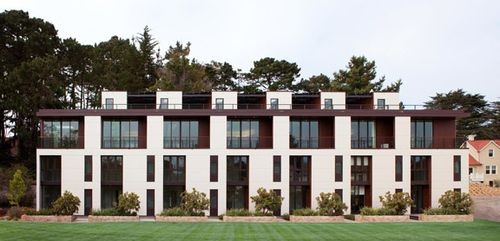
a. New construction should be all-electric with no natural gas hookups.
b. Conversion of existing building stock to all-electric should be encouraged through multiple mechanisms (e.g., required during major remodels). Electric heat pumps for replacement of natural gas HVAC systems, induction ranges in place of gas, solar and electric (including on-demand) replacement water heaters, and electric clothes dryers.
c. Seek grants, rebates and other incentives to finance electrification efforts.
d. Phase out natural gas by 2030.
3. Promote solar panel installation with battery back-up throughout the City. Develop public-private partnerships with local installers and evaluate further potential for home-grown generation.
a. Expand penetration of roof-top solar. Promote addition of battery back-up systems in these installations to provide added resilience against brownouts and Public Safety Power Shutoffs (PSPS) outages.
b. Consider reduced permit fees for solar installations.
c. Support regional “solar farms” that might be part of a larger community microgrid system.
4. Promote microgrid technology and implementation. First, to harden police, fire, hospitals, schools, evacuation centers and other essential services from brownouts, blackouts and PSPS outages. Second, to gain community resiliency and independence from the main utility power lines.
5. The City and community at large have achieved a significant reduction in emissions from electricity by participating in 100% Green Power with Clean Power Alliance. Continue to support and promote enrollment in CPA and 100% Green Power.
6. Keep abreast of alternative energy developments and be open to incorporating systems as they become available.
Carbon Sequestration: In addition to reducing emissions of greenhouse gases, we need to capture and sequester carbon from the atmosphere
Trees and soil are the most important carbon sinks.
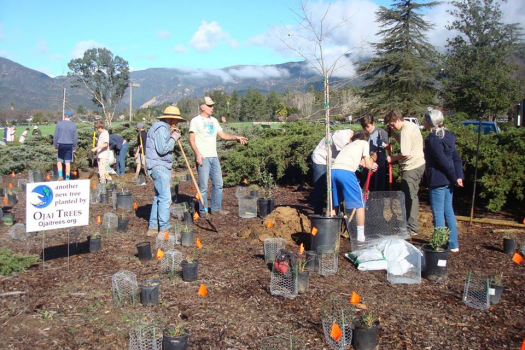
1. Establish or renew our status as an International Tree City.
2. Commit to planting a significant number of trees by 2030.
3. We should evaluate and preserve the existing tree inventory and develop a planting program to renew and extend a native tree canopy. An evaluation of potential for adding trees within the City should be conducted.
4. Adopt a mitigation ratio for trees removed from private and public properties.
5. Encourage native drought tolerant plantings with water use co-benefits.
6. Support regenerative agriculture and integrated pest management.
7. Enhance carbon capture on city properties and parks and educate residents on measures that can be taken in their yards.
City Operations: Reduce greenhouse gases
Investigate options to incorporate climate emergency throughout city operations. These projects should be prioritized and pursued as capital funding permits; and, outside grants/incentives should be identified and pursued.
1. Energy conservation and electrification retrofits in existing city buildings to reduce both heating/cooling requirements and greenhouse gas emissions.
2. Add solar panels with battery back-up systems on city properties.
3. Pursue small-scale and regional microgrid technology within city properties for resilience and energy independence.
4. Convert vehicle fleet to electric vehicles.
5. Evaluate possibility of electrifying trolley fleet or replacement of current trolleys with battery-electric models.
6. Climate mitigation should be a top priority for City funding and planning (e.g., budget and General Plan Update).
7. City should divest funds from fossil fuel companies and from banks that invest in fossil fuels. City should follow actions recently announced by the University of California with investment in clean energy funds and companies.
8. City should monitor availability of infrastructure grants, including solarization, microgrid and energy conservation that are likely to be made available through economic recovery funds. These are anticipated as part of recovery efforts following the pandemic.
9. Promote carbon capture (sequestration) on City properties and parks.
10. Climate impact should be included as part of the decision-making processes within all city departments, commissions, committees, and the Council.
Influence: climate action and GHG reductions beyond our City
As we imagine, act, and talk about our climate action goals and achievements, the needed collective concern and political will can spread. 
1. Pursue funding opportunities from County, State, Federal agencies, and private foundations to demonstrate how a community can become carbon neutral and even carbon negative.
2. As a ‘tourist’ town we can promote the values of clean and green living anchored by our open spaces, agricultural amenities and commitment to reducing our carbon footprint.
3. Demonstrate value of carbon sequestration.
4. Advocate for electrification of School District buses and South Coast Area Transit.
5. City to consider joining potential litigation against oil and gas.
6. Encourage County APCD and County and City governments to be more involved in climate change mitigation.
Summation: “Time’s Wasting”
These recommendations have been presented by Steven Nash to the Oxnard City Council and staff and teams in other cities may do the same as a way to jumpstart climate actions now while cities are working on GHG inventories and Climate Action Plans.
As Steve Nash wrote to his Oxnard city leaders: “So here it is. Which Council member will propose Oxnard adopt it? Time’s wasting. Global warming waits for no city and Oxnard is uniquely situated to be both heavily impacted by climate change and primed for resiliency if we only act immediately.”

